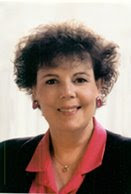When I am asked this question I used to say “80% or more cotton, the
right size & in my house”, I have come a long way. And understanding the
differences between batting types helps make selecting a quilt batting easier.
The very best place to learn about a particular type of batting is the product
information on the label.
Batting is the soft layer
between the quilt top and the backing. It gives the quilt dimension and
definition as well as offering warmth. Because it comes in various thicknesses,
it can make a quilt flat or puffy, stiff or drapable. It is available by the
yard or packaged to fit standard bed sizes.
Historically, quiltmakers
used whatever natural fibers were on hand for the quilt’s middle layer. Today’s
quilter has an overwhelming number to choose from, natural and synthetic
products that have a variety of characteristics.
The batting you choose should
complement the nature and use of your finished quilt. I’ll talk about all the
different qualities of battings and help you choose the one that will work best
for your project.
Batting Qualities
Things to think about when selecting the right
batting.
Drapability: The density or sparseness of the
quilting and the loft of the batting will affect the drape, or relative
stiffness or softness, of the finished quilt.
Grain line: Many batts have a grainline. Just like
with fabric, the lengthwise grain is stable and doesn’t have much give; the
crosswise grain will be stretchy.
Note:
A wall hanging is happiest when the stable grainline is vertical.
Loft: This term describes the thickness of the
batting. Different loft levels result in different appearances in a finished
quilt.
Resiliency: This is the batting’s ability to regain
its original shape--how quickly it can spring back when unfolded and how it
resists creasing.
Warmth: Cotton battings absorb moisture, making
them cool in the summer and warm in the winter. Wool battings provide warmth
with little weight.
Note:
I live in Seattle. After many years of sleeping with a polyester comforter, I
decided it was time I make a quilt with a cotton batt. We nearly froze the
first winter. We now have quilt with a wool batt, it’s perfect.
Washability and shrinkage: Polyester and wool
battings resist shrinking, while cotton can shrink from 3 to 5 percent. Some
quilters prefer the puckered, antique look that results when batting shrinks. I
prefer no shrinkage so I prewash my batting.
Note:
Read the manufacturer’s directions if you choose to prewash.
Here is a comparison of types of batting and the
pros and cons of each.
Hand quilting
Will your stitching be high
density? Choose a low-loft batting. Batting options could
include 100% cotton, cotton/polyester
blend, or wool.
Will your stitching be medium
density? Choose a medium-loft batting. Batting options could include a
cotton/polyester blend or wool.
Will your stitching be low
density? Choose a high-loft batting. This combination is not
recommended as stitching will be
lost in the batting’s loft.
Machine quilting
Will your stitching be high
density? Choose a low-loft batting. Batting options could include cotton,
cotton/polyester blend, or wool.
Will your stitching be low
density? Choose a medium-loft batting. Batting options could
include wool or a
cotton/polyester blend.
Tied quilts
Choose a medium- to high-loft
batting. Only batting option should be polyester.
Note:
Looong before I knew better, I put a cotton batt in a tied quilt. The first
time it was washed there was one large lump of batting in the corner.
How Will Your Quilt Be Used?
Before you make your final batting choice, consider
how you’ll use your quilt. These questions will help you evaluate which batting
is best for your project.
Is it a baby quilt that will be washed and dried
extensively? Will it be placed on a child’s bed and get pulled and tugged? Are
you making a wall hanging that needs to maintain sharp, crisp corners? Or are
you making a quilt that you want to drape loosely over a bed and tuck beneath
the pillows? Is it an heirloom project that will be used sparingly and only
laundered once every few years? Or is it a decorative item that will never be washed?
Is it a table runner that needs to lie extremely flat?
Bed Sizes
Crib mattress 23 x 46” Batting 45
x 60”
Twin Size mattress 39 X 75”
Batting 72 x 90”
Double/full mattress 54 x 75”
Batting 81 x 76”
Queen Size mattress 60 X 80”
Batting 90 x 108”
King Size mattress 76 X 80”
Batting 120 x 120”
 Earlier this year I promised to post more about making scrap quilts. I store my scraps in cut squares. Anytime I need a square of a specific size, I head right to that box. I find it much more inspiring to get right to the designing, not cutting fabric.
Earlier this year I promised to post more about making scrap quilts. I store my scraps in cut squares. Anytime I need a square of a specific size, I head right to that box. I find it much more inspiring to get right to the designing, not cutting fabric.




























